| Umělec 2001/2 >> Personal Experience vs. Digital Technology | Просмотр всех номеров | ||||||||||||
|
|||||||||||||
Personal Experience vs. Digital TechnologyUmělec 2001/201.02.2001 David Kulhánek | review | en cs |
|||||||||||||
|
"Darren Almond, Kunsthalle Zurich, 31 March – 27 May 2001
Darren Almond (b. 1971) belongs to the youngest generation of British artists who first became known during the great YBA boom. His latest solo exhibition at Kunsthalle Zürich (31 March – 27 May 2001) boasted the qualities of a retrospective, displaying a “cross-section” of Almond’s work from 1996 – 2001. As with Richard Billingham, that star from the underclass of Birmingham, Almond’s social origins in no way foretold a career in art. He was born into a family of demolition workers in Lancashire, a region with a long coal-mining tradition. His hometown, Wigan, calls to mind George Orwell’s social critique, Road to Wigan Pier (1937) — an honest analysis of a no-win situation in a particular region during the social and economic crisis of that time. Admittedly, he probably wouldn’t even recognize Wigan today, now a fully-fledged city after the restructuring of the mining industry. He considered it a model case of a devastated environment — the dead end of capitalism. Darren Almond, too, works with the “dark” history of his hometown and region. He draws on the experiences of his relatives (his grandfather was a typical miner of his time) and whatever relics survive from the past. In his 28-minute video installation, Traction (1999),1 Almond on one screen interviews his own father, who takes us through the long litany of his work-related injuries. The description of the numerous fractures is accompanied by images on a second screen of Almond’s mother, who periodically breaks into tears and then composes herself again. The third, central screen of this installation shows black and white footage of a mechanical digger gouging the earth. Gradually, the old man’s story becomes more and more absurd — there are simply way too many “civilization” bruises for one human life. The body is a living container of information, holding the traces of time and specific social experience. Almond’s social and family anamnesis is emotionally impressive. The artist’s only role is as an inquiring voice. The latest installation, Mine (2001), also contains distanced links to Almond’s native region. The two-part video projection combines footage of a large room illuminated by a rising sun, in which miners are changing their clothes, and of the bizarre railway they use to penetrate the depths of the mine. The “plot” unfolds somewhere in Kazakhstan and shows the kinds of scenes normally associated with industrial England at the end of the 19th century. The footage matches the music, beat for beat, and the singing is based on the authentic tradition of Central Asian shamans. The alternating light and darkness and the mystical descent underground evoke an almost archetypal atmosphere. Another video, Geisterbahn (1999), represents a lighter counterpart to Mine. Almond attached a camera to the front of an old ghost train carriage at a fairground in Vienna, placing the lens inside a skull’s eye socket. The viewer flies through a haunted house to the sound of festive music and the snapping of jaws. The motif of rails and transportation through space and time is not accidental in Almond’s work; on the contrary, it is continually developed. As a “train-spotting” aficionado, he has personal experiences of the “relativity” of time with regard to place and space (moving away, passing, acceleration) embossed on his memory. Trains, and means of transport in general, are often a part of Almond’s work, including the video Schwebebahn (1995) — a series of photographs of trains and fictitious signs. Darren Almond was represented at the exhibition Sensation (Royal Academy of Art, London, 1997) with an object entitled A Bigger Clock (1997), inspired by the digital clocks at train stations. But Almond’s version is bigger and bears a sign with the artist’s name; as the numbers rotate on the display the clock makes a loud sound and the clock marks every minute with a surprisingly horrifying intonation. This is not a “ready-made,” or a pop art enlargement, as it might at first appear to be. It is a kinetic object recording changes in real time and space, as these relate to the physical presence of the viewer. In a similar fashion, Almond “transcribed” ordinary three-bladed fans into kinetic statues with his KN120 Recorded (1995), Fan (1997) and Another Fan, (1999). In a room the movement of the fans represents a transfer from a triangular disposition to the optical circular movement that occurs in a cubic space. This “triangulation” of space formed the basis for a series of geometrical drawings portraying various phases of the fans’ movement. The Zürich exhibition displayed this tendency with his 120 tiny photographs, Tuesday 11.01. – 12.00 and Tuesday 23.01. – 0.00 (1996), which capture Almond’s studio, minute by minute, with identical shots. The photographs represent an exact analogy for the numerical movements on a digital clock. Today (2000) is a digital machine with a fixed sign which reads “-day,” with a prefix that changes every 24 hours. The theme of Auschwitz has recently appeared in Darren Almond’s work as a topical reflection on history and the dimension of real time. Oswiecim, March 1997,2 comprises two 8mm films of bus stops in the small Polish town of the title, projected side by side. At one stop are visitors from the concentration camp, and at the other, commuters returning home. In Zürich, Almond exhibited two objects entitled Shelter (2000). Bus stops from Auschwitz, still containing their bus schedules, sans timetables but with actual place names on a predetermined “line,” they emphasize the unbelievable experience of the “real” movement of transportation. To be “inside” and to be a mere observer of the departing train are two analogical experiences of the same moment but with completely different consequences. In an era of ever-growing dependence on digital models of reality, Darren Almond’s conceptual thinking represents an example of the still-fresh division between the personal dimension of experience (real time and space and one’s own physical presence) and the mathematically transformed world of technology. Translated by Vladan Šír Photographs courtesy of Kunsthalle Zurich Notes: 1. The three-part video installation Traction is on view at the 2nd Berlin Biennale in Alter Postfuhramt until June 20, 2001. 2. For a foreigner it may come as a surprise to discover that Auschwitz, whose name is so pungent with horrifying history, also has a civilian name, Oswiecim, and continues to be an ordinary Polish town. "
01.02.2001
Рекомендуемые статьи
|
|||||||||||||
|
04.02.2020 10:17
Letošní 50. ročník Art Basel přilákal celkem 93 000 návštěvníků a sběratelů z 80 zemí světa. 290 prémiových galerií představilo umělecká díla od počátku 20. století až po současnost. Hlavní sektor přehlídky, tradičně v prvním patře výstavního prostoru, představil 232 předních galerií z celého světa nabízející umění nejvyšší kvality. Veletrh ukázal vzestupný trend prodeje prostřednictvím galerií jak soukromým sbírkám, tak i institucím. Kromě hlavního veletrhu stály za návštěvu i ty přidružené: Volta, Liste a Photo Basel, k tomu doprovodné programy a výstavy v místních institucích, které kvalitou daleko přesahují hranice města tj. Kunsthalle Basel, Kunstmuseum, Tinguely muzeum nebo Fondation Beyeler.
|







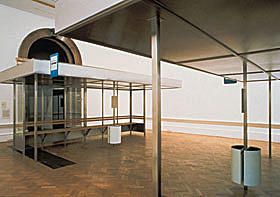
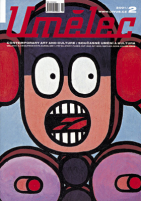













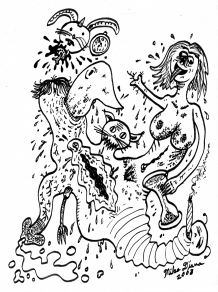




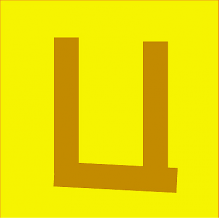
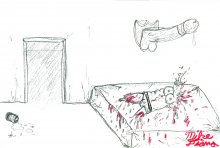
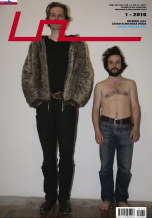
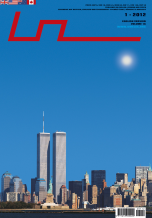


 New book by I.M.Jirous in English at our online bookshop.
New book by I.M.Jirous in English at our online bookshop.
Комментарии
Статья не была прокомментированаДобавить новый комментарий